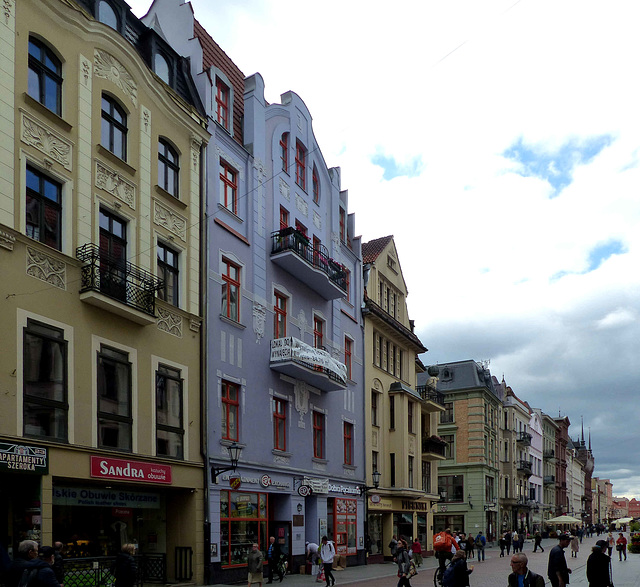Toruń - Dom Kopernika
Toruń - Dom Kopernika
Toruń - Ratusz Staromiejski
Toruń - Kościół św. Jakuba
Toruń - Kościół św. Jakuba
Toruń - Kościół św. Jakuba
Toruń - Kościół św. Jakuba
Toruń - Kościół św. Jakuba
Toruń - Kościół św. Jakuba
Toruń - Kościół św. Jakuba
Toruń - Okrąglak
Toruń - Bazylika katedralna św. Jana Chrzciciela i…
Toruń - Bazylika katedralna św. Jana Chrzciciela i…
Toruń - Bazylika katedralna św. Jana Chrzciciela i…
Toruń - Bazylika katedralna św. Jana Chrzciciela i…
Toruń - Bazylika katedralna św. Jana Chrzciciela i…
Toruń - Bazylika katedralna św. Jana Chrzciciela i…
Toruń - Bazylika katedralna św. Jana Chrzciciela i…
Toruń - Bazylika katedralna św. Jana Chrzciciela i…
Toruń - Bazylika katedralna św. Jana Chrzciciela i…
Toruń - Bazylika katedralna św. Jana Chrzciciela i…
Toruń - Filmset
Toruń - Kościół Wniebowzięcia Najświętszej Marii P…
Toruń - Kościół Wniebowzięcia Najświętszej Marii P…
Toruń
Toruń
Baszta Gołębnik
Brama Żeglarska
ul. Żeglarska
Pałac Dąmbskich
Dom Mikołaja Kopernika 1
Dom Mikołaja Kopernika
Location
Lat, Lng:
Lat, Lng:
You can copy the above to your favourite mapping app.
Address: unknown
Lat, Lng:
You can copy the above to your favourite mapping app.
Address: unknown
See also...
Keywords
Authorizations, license
-
Visible by: Everyone -
All rights reserved
-
87 visits
Toruń


Already in the 7th century, it was the location of a fortified Slavonic settlement, at a ford in the Vistula river. Thorn was established in 1231 under the administration of the Teutonic Order. The Teutonic Order had been called earlier by the Polish Duke Conrad of Mazovia to Christianize the pagan Baltic Pruzzes. However, the Order became active only after Emperor Frederick II granted it the right to rule over the land to be conquered in 1226. The foundation stone of the city of Thorn was laid in 1231 and soon after immigrants from Westphalia populated the town.
In the 14th century, Thorn joined the Hanseatic League. The Order's efforts to simultaneously expand its sovereignty and control trade led to warlike conflicts. The city was captured by Poland in 1410 during the Polish–Lithuanian–Teutonic War however, after the First Peace of Thorn was signed in 1411, the city fell back to the Teutonic Order. In the 1420s, Polish King Władysław II Jagiełło built the Dybów Castle, located in present-day left-bank Toruń.
In 1440, the gentry of Thorn co-founded the Prussian Confederation to further oppose the Knights' policies. The Confederation rose against the Monastic state of the Teutonic Knights in 1454 and its delegation submitted a petition to Polish King Casimir IV Jagiellon asking him to regain power over the region as the rightful ruler.
These events led to the Thirteen Years' War. The citizens of the city conquered the Teutonic castle and dismantled the fortifications. In May 1454, a ceremony was held in Toruń, during which the nobility, knights, landowners, mayors, and local officials solemnly swore allegiance to the Polish King. During the war, Toruń financially supported the Polish Army. The Thirteen Years' War ended in 1466, with the Second Peace of Thorn, in which the Teutonic Order renounced any claims to the city and recognized it as part of Poland.
During the Great Northern War (Deluge), the city was besieged by Swedish troops. In the second half of the 17th century, tensions between Catholics and Protestants grew. In the early 18th century about half of the population, especially the gentry and middle class, was German-speaking and Protestant, while the other half was Polish-speaking Roman Catholic.
The old town of Torun is a UNESCO World Heritage Site.
-
Street scene with art nouveau house
Translate into English
In the 14th century, Thorn joined the Hanseatic League. The Order's efforts to simultaneously expand its sovereignty and control trade led to warlike conflicts. The city was captured by Poland in 1410 during the Polish–Lithuanian–Teutonic War however, after the First Peace of Thorn was signed in 1411, the city fell back to the Teutonic Order. In the 1420s, Polish King Władysław II Jagiełło built the Dybów Castle, located in present-day left-bank Toruń.
In 1440, the gentry of Thorn co-founded the Prussian Confederation to further oppose the Knights' policies. The Confederation rose against the Monastic state of the Teutonic Knights in 1454 and its delegation submitted a petition to Polish King Casimir IV Jagiellon asking him to regain power over the region as the rightful ruler.
These events led to the Thirteen Years' War. The citizens of the city conquered the Teutonic castle and dismantled the fortifications. In May 1454, a ceremony was held in Toruń, during which the nobility, knights, landowners, mayors, and local officials solemnly swore allegiance to the Polish King. During the war, Toruń financially supported the Polish Army. The Thirteen Years' War ended in 1466, with the Second Peace of Thorn, in which the Teutonic Order renounced any claims to the city and recognized it as part of Poland.
During the Great Northern War (Deluge), the city was besieged by Swedish troops. In the second half of the 17th century, tensions between Catholics and Protestants grew. In the early 18th century about half of the population, especially the gentry and middle class, was German-speaking and Protestant, while the other half was Polish-speaking Roman Catholic.
The old town of Torun is a UNESCO World Heritage Site.
-
Street scene with art nouveau house
- Keyboard shortcuts:
Jump to top
RSS feed- Latest comments - Subscribe to the comment feeds of this photo
- ipernity © 2007-2024
- Help & Contact
|
Club news
|
About ipernity
|
History |
ipernity Club & Prices |
Guide of good conduct
Donate | Group guidelines | Privacy policy | Terms of use | Statutes | In memoria -
Facebook
Twitter

Sign-in to write a comment.